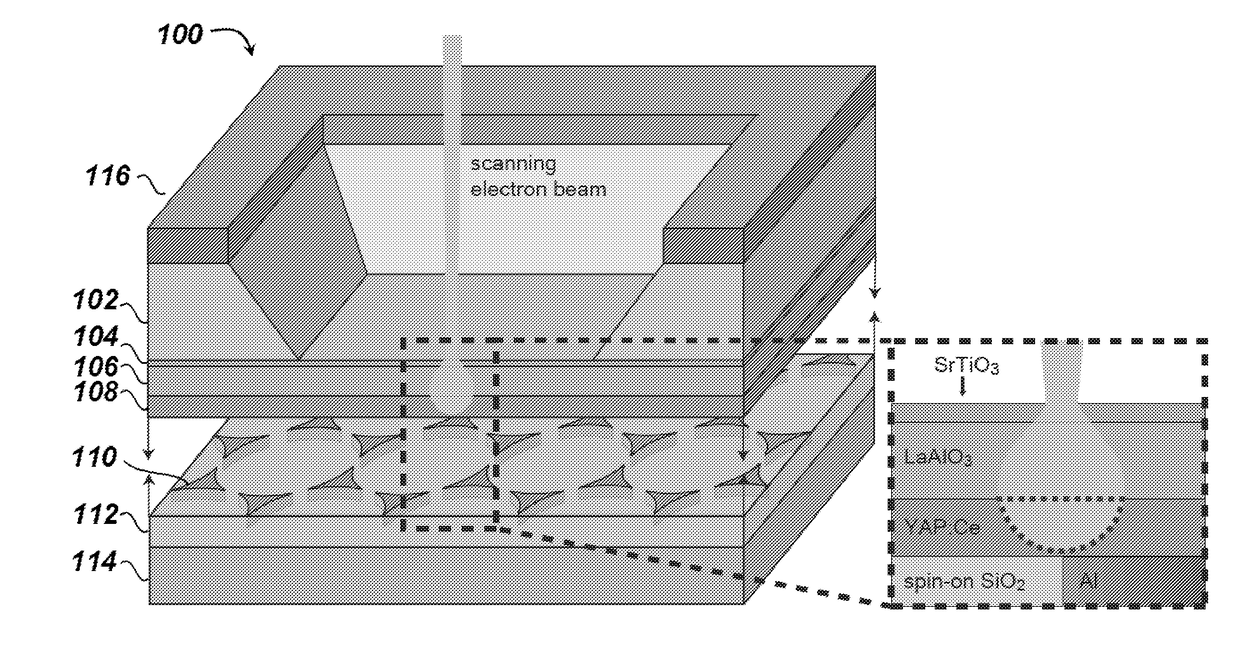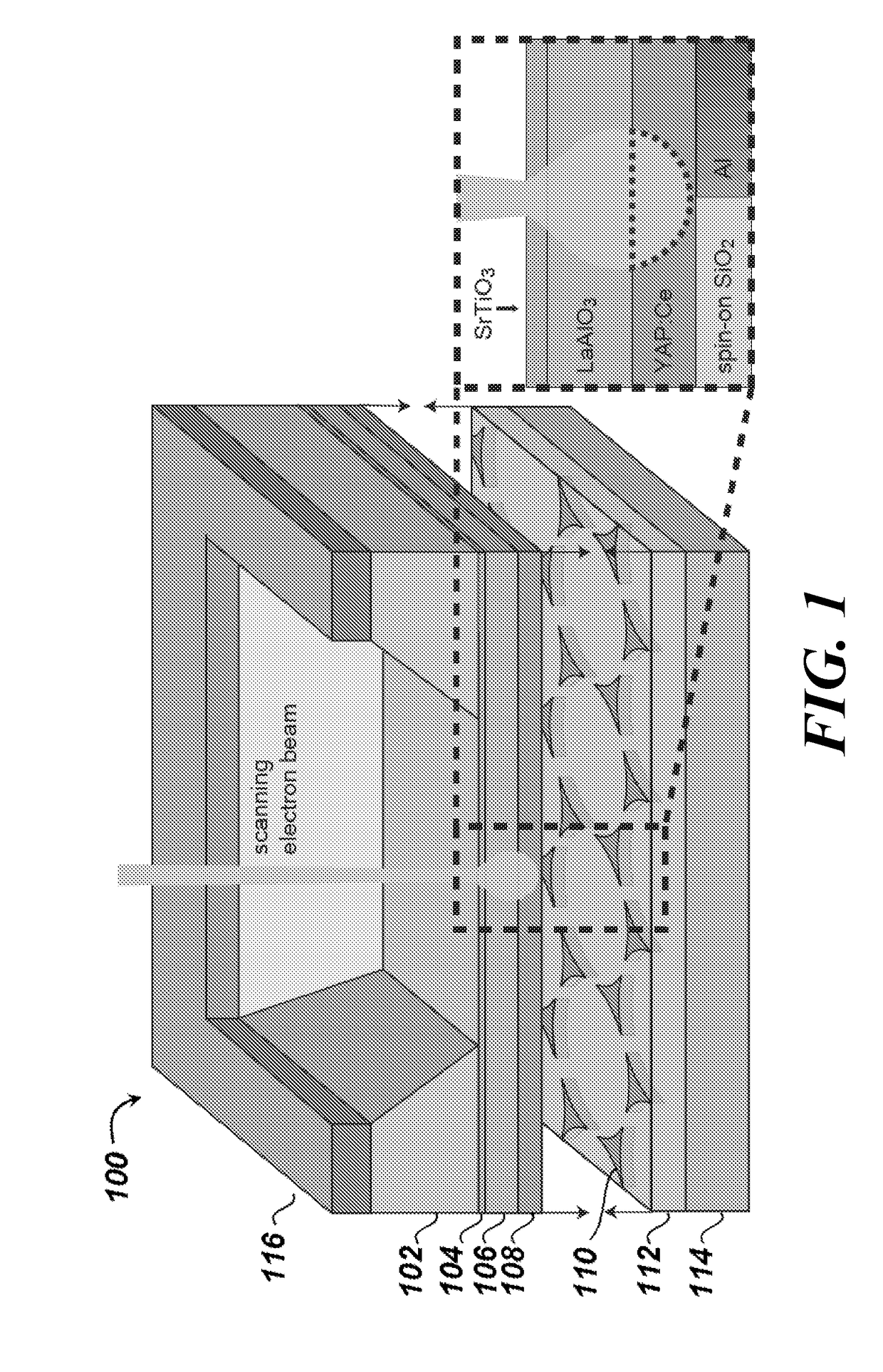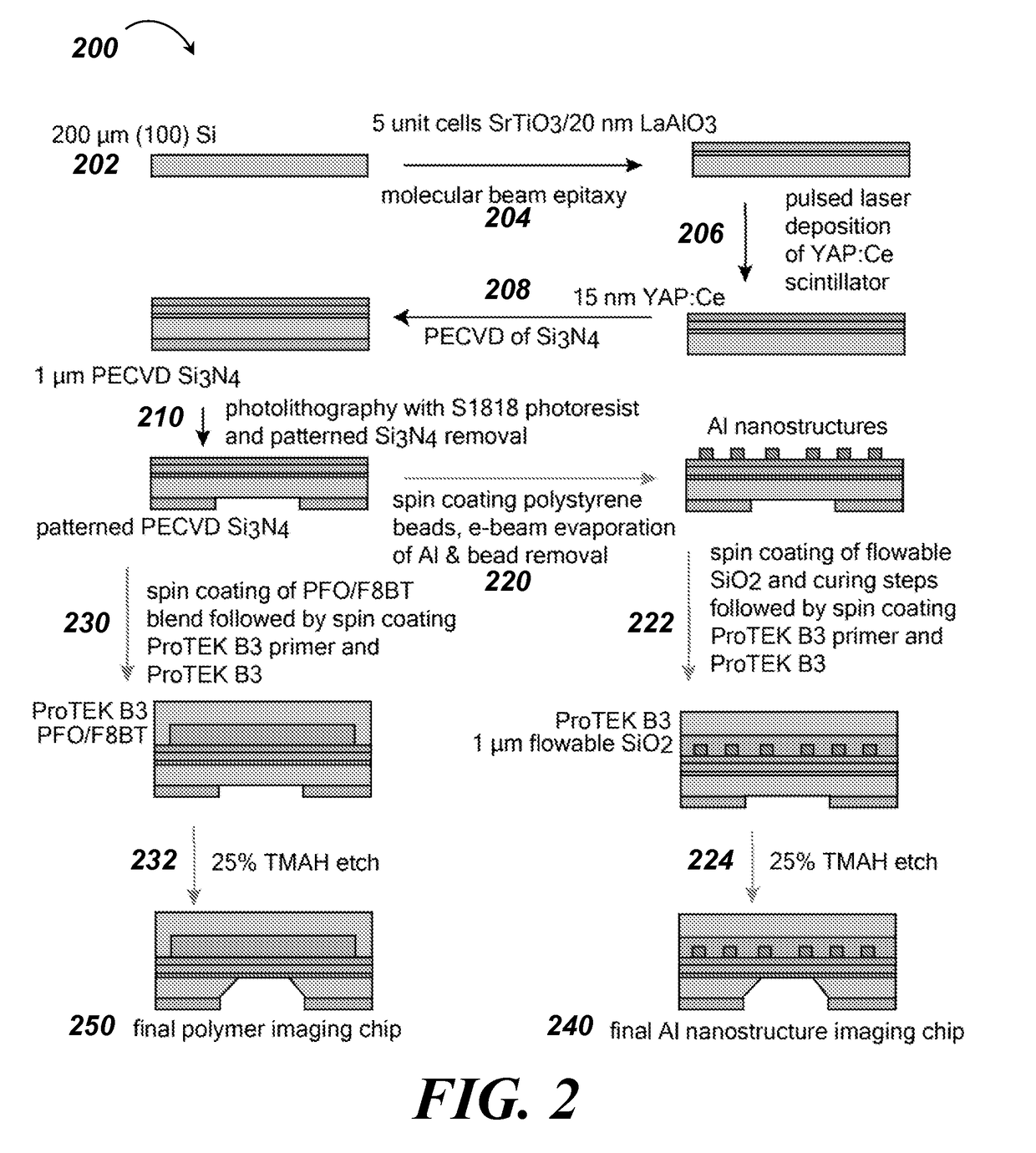Cathodoluminescence-activated nanoscale imaging
a technology of cathodoluminescence and nano-scale, applied in the field of nano-scale imaging, can solve the problems of poor imaging quality, difficult to attach fluorescent labels, damage to soft materials, etc., and achieve the effect of high resolution
- Summary
- Abstract
- Description
- Claims
- Application Information
AI Technical Summary
Benefits of technology
Problems solved by technology
Method used
Image
Examples
embodiment 1
2. The system of embodiment 1, wherein the electron beam source is configured to contact multiple locations of the illumination layer with an electron beam without contacting the sample with the electron beam.
3. The system of embodiment 1, wherein the illumination layer has an optical near-field of 10 nm or less, and wherein the sample is located within the optical near-field of the illumination layer.
4. The system of any one of embodiments 1 to 3, further comprising a parabolic mirror to direct the at least a portion of the photons emitted by the illumination layer to be received by the optical detector.
5. The system of any one of embodiments 1 to 4, wherein the illumination layer comprises YAl3O and Ce3+.
embodiment 5
6. The system of embodiment 5, wherein the illumination layer is between 5 nm and 20 nm thick.
7. The system of embodiment 5, wherein the illumination layer is between 15 nm and 20 nm thick.
8. The system of any one of embodiments 1 to 7, wherein the sample comprises a biological molecule.
9. A method for imaging a sample, comprising:[0242](i) producing an electron beam from an electron beam source;[0243](ii) contacting multiple locations of an illumination layer with the electron beam,[0244]wherein the electron beam source is located above the illumination layer,[0245]wherein a sample is located below the illumination layer,[0246]wherein the contacting of the illumination layer with the electron beam excites least a portion of the illumination layer without exciting the sample, and[0247]wherein at least a portion of the excited illumination layer emits photons;[0248](iii) detecting at least a portion of the photons emitted by the excited illumination layer,[0249]wherein the detected p...
embodiment 10
11. The method of embodiment 10, wherein the illumination layer is between 5 nm and 20 nm thick.
12. The method of embodiment 10, wherein the illumination layer is between 15 nm and 20 nm thick.
13. The method of any one of embodiments 9 to 12, wherein the sample comprises a biological molecule.
14. The method of any one of embodiments 9 to 13, wherein (ii) through (iv) are repeated to produce one or more additional images of the sample sequentially over a period of time.
15. An imaging chip comprising:[0251]an illumination layer,[0252]wherein the illumination layer is configured to be contacted by an electron beam produced from an electron beam source positioned above the illumination layer, become excited by contact with the electron beam, and emit photons when excited;[0253]a sample layer,[0254]wherein the sample layer is configured to hold a sample and is positioned below the illumination layer;[0255]a frame layer,[0256]wherein the frame layer is configured to provide structural sup...
PUM
 Login to View More
Login to View More Abstract
Description
Claims
Application Information
 Login to View More
Login to View More - R&D
- Intellectual Property
- Life Sciences
- Materials
- Tech Scout
- Unparalleled Data Quality
- Higher Quality Content
- 60% Fewer Hallucinations
Browse by: Latest US Patents, China's latest patents, Technical Efficacy Thesaurus, Application Domain, Technology Topic, Popular Technical Reports.
© 2025 PatSnap. All rights reserved.Legal|Privacy policy|Modern Slavery Act Transparency Statement|Sitemap|About US| Contact US: help@patsnap.com



